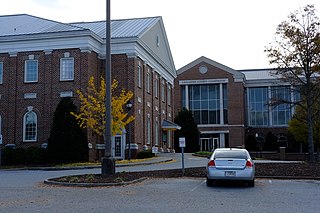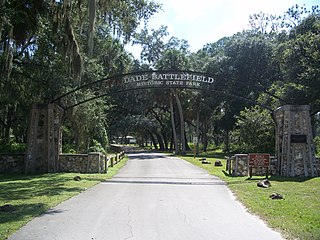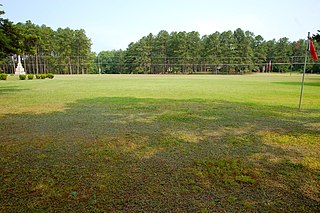
The Patriot is a 2000 American historical war drama film directed by Roland Emmerich and written by Robert Rodat. The film stars Mel Gibson, Heath Ledger, Joely Richardson, Jason Isaacs, Chris Cooper, and Tom Wilkinson. Set in Berkeley County, South Carolina, it follows Benjamin Martin (Gibson), an American colonist opposed to going to war with Great Britain but, along with his son Gabriel (Ledger), gets swept into the American Revolutionary War when his home life is disrupted, and one of his sons is murdered by a cruel British officer (Isaacs). Rodat has said Martin is a composite character based on four historical men: Andrew Pickens, Francis Marion, Daniel Morgan and Thomas Sumter.

Brigadier General Francis Marion, also known as the "Swamp Fox", was an American military officer, planter, and politician who served during the French and Indian War and the Revolutionary War. During the American Revolution, Marion supported the Patriot cause and enlisted in the Continental Army, fighting against British forces in the Southern theater of the American Revolutionary War from 1780 to 1781.

Lancaster County is a county located in the U.S. state of South Carolina. As of the 2020 census, its population was 96,016, Its county seat is Lancaster, which has an urban population of 23,979. The county was created in 1785.

The city of Lancaster is the county seat of Lancaster County, South Carolina, United States, located in the Charlotte Metropolitan Area. As of the United States Census of 2010, the city population was 8,526. The city was named after the famous House of Lancaster.

Sir Banastre Tarleton, 1st Baronet was a British general and politician. He is best known as the lieutenant colonel leading the British Legion at the end of the American Revolution. He later served in Portugal and held commands in Ireland and England.

The Battle of Kings Mountain was a military engagement between Patriot and Loyalist militias in South Carolina during the Southern Campaign of the American Revolutionary War, resulting in a decisive victory for the Patriots. The battle took place on October 7, 1780, 9 miles (14 km) south of the present-day town of Kings Mountain, North Carolina. In what is now rural Cherokee County, South Carolina, the Patriot militia defeated the Loyalist militia commanded by British Major Patrick Ferguson of the 71st Foot. The battle has been described as "the war's largest all-American fight".

The British Legion was an elite British provincial regiment established during the American Revolutionary War, composed of Loyalist American troops, organized as infantry and cavalry, plus a detachment from the 16th Light Dragoons. The unit was commonly known as Tarleton's Legion, after the British officer who led it on campaign, Lieutenant Colonel Banastre Tarleton. It was a unit the size of a regiment, consisting of artillery, cavalry, and light infantry, and able to operate independently.
The Waxhaws is a geographical region extending beyond both sides of the border between what now is North Carolina and South Carolina, United States. It encompasses the areas currently known as Lancaster, Union and Mecklenburg counties. The name is derived from that of the Indigenous people who first inhabited the landbase, the Waxhaw people. Much of the area is now the territory of the Catawba Indian Nation.

The Battle of Waxhaws was a military engagement which took place on May 29, 1780 during the American Revolutionary War between a Patriot force led by Abraham Buford and a British force led by Banastre Tarleton near Lancaster, South Carolina. Buford's men consisted of Continental Army soldiers, while Tarleton's force was mostly made up of Loyalist troops. After the two forces sighted each other, Buford rejected an initial demand to surrender. Tarleton's cavalrymen launched a charge against the Patriot troops, which led many of Buford's men to throw their arms down in surrender. However, as Tarleton was shot under his horse during the charge, his infuriated soldiers attacked their Patriot opponents, killing several.

Kings Mountain National Military Park is a National Military Park near Blacksburg, South Carolina, along the North Carolina/South Carolina border. The park commemorates the Battle of Kings Mountain, a pivotal and significant victory by American Patriots over American Loyalists during the Southern Campaign of the Revolutionary War. It was listed on the National Register of Historic Places in 1996. Thomas Jefferson considered the battle "The turn of the tide of success."
South Carolina was outraged over British tax policies in the 1760s that violated what they saw as their constitutional right to "no taxation without representation". Merchants joined the boycott against buying British products. When the London government harshly punished Massachusetts for the Boston Tea Party, South Carolina's leaders joined eleven other colonies in forming the Continental Congress. When the British attacked Lexington and Concord in the spring of 1775 and were beaten back by the Massachusetts Patriots, South Carolina Patriots rallied to support the American Revolution. Loyalists and Patriots of the colony were split by nearly 50/50.

Guilford Courthouse National Military Park, at 2332 New Garden Road in Greensboro, Guilford County, North Carolina, commemorates the Battle of Guilford Court House, fought on March 15, 1781. This battle opened the campaign that led to American victory in the Revolutionary War. Though they won the battle, the casualties suffered by the British in this battle contributed to their surrender at Yorktown seven months later. The battlefield is preserved as a National Military Park and operated by the National Park Service (NPS). Based on research of historical evidence, the interpretation of the battle has changed since the late 20th century, which will affect the placement of monuments and markers.

The South Carolina State House is the building housing the government of the U.S. state of South Carolina, which includes the South Carolina General Assembly and the offices of the Governor and Lieutenant Governor of South Carolina. Located in the capital city of Columbia near the corner of Gervais and Assembly Streets, the building also housed the Supreme Court until 1971.

Dade Battlefield Historic State Park is a state park located on County Road 603 between Interstate 75 and U.S. Route 301 in Sumter County, Florida. The 80-acre (32 ha) park includes 40 acres (160,000 m2) of pine flatwoods and a live oak hammock. Also called the Dade Massacre site, it preserves the Second Seminole War battlefield where tribal Seminole warriors fought soldiers under the command of Major Francis L. Dade on December 28, 1835. Each year, on the weekend after Christmas, the Dade Battlefield Society sponsors a reenactment of the battle that started the Second Seminole War.
Abraham Buford was an American soldier. He was a Continental Army officer during the American Revolutionary War, best known as the commanding officer of the American forces at the Battle of Waxhaws. After the war Buford became a member of the Society of the Cincinnati of the State of Virginia.

Alamance Battleground is a North Carolina State Historic Site commemorating the Battle of Alamance. The historic site is located south of Burlington, Alamance County, North Carolina in the United States.

Bentonville Battlefield is a North Carolina state historic site at 5466 Harper House Road in Johnston County, North Carolina. It belongs to the North Carolina Department of Natural and Cultural Resources and is the site of the 1865 Battle of Bentonville, fought in the waning days of the American Civil War. It was declared a National Historic Landmark in 1996.
The Battle of Hanging Rock was a battle in the American Revolutionary War that occurred between the American Patriots and the British. It was part of a campaign by militia General Thomas Sumter to harass or destroy British outposts in the South Carolina back-country that had been established after the fall of Charleston in May 1780.

The Soldiers and Sailors Monument is a 43-foot (13 m) tall Gothic Revival memorial which stands in Penn Square in downtown Lancaster, Pennsylvania. It was dedicated on July 4, 1874, at its present site on the Northeast intersection of King and Queen Streets. The monument's original intention was to pay tribute to Lancastrian Union soldiers killed during the American Civil War. However, today the Soldiers and Sailors Monument also represents those who have served in subsequent American military conflicts.

Waxhaw Presbyterian Church Cemetery, also known as Old Waxhaw Cemetery, is a historic Presbyterian church cemetery located near Lancaster, Lancaster County, South Carolina. It was founded in 1757 and is a visual reminder of the pioneer settlement of Waxhaw. It includes noteworthy examples of 18th and 19th century tombstones.



















